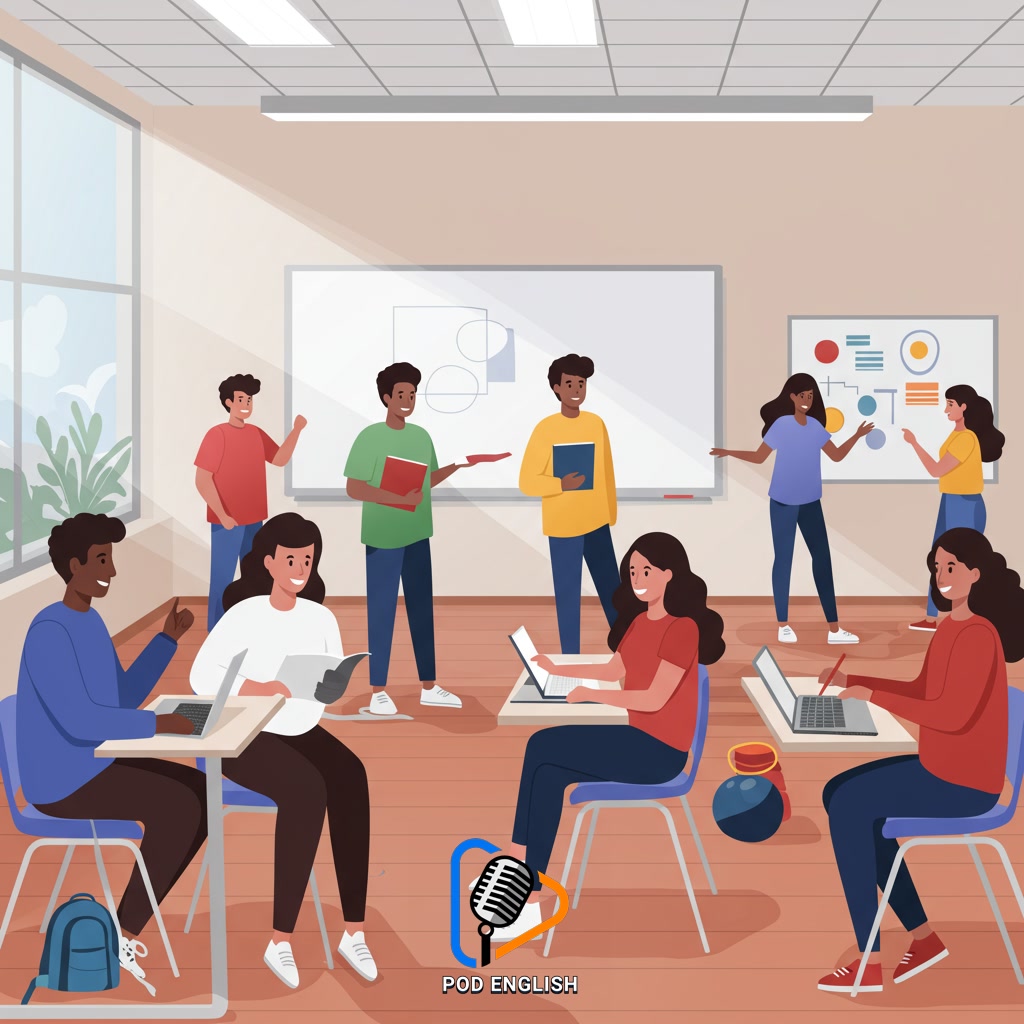Learn English
Effective Active Learning for English Mastery

This content explores powerful strategies for mastering English through active engagement. It emphasizes practical approaches that require learners to participate directly in the language. The focus is on developing fluency and confidence through consistent, interactive practice. By applying these effective techniques, individuals can significantly enhance their English proficiency.
Table of Contents
- Section 1: Understanding Active Learning and Its Relevance to English Mastery
- Section 2: Key Principles of Effective Active English Learning
- Section 3: Practical Active Learning Techniques for English Skills (Reading, Writing, Listening, Speaking)
- Section 4: Integrating Active Learning into Your English Study Routine
- Section 5: Measuring Progress and Maintaining Motivation in Active English Learning
Section 1: Understanding Active Learning and Its Relevance to English Mastery
Active learning is a dynamic approach where learners actively participate in the learning process rather than passively receiving information. For English mastery, this means going beyond simply listening to lectures or reading textbooks. It involves speaking, writing, interacting, and using the language in real situations. Understanding active learning is crucial because language acquisition is a skill that requires practice. By actively engaging with English – practicing conversations, writing emails, giving presentations, or using language apps interactively – learners build fluency, improve retention, and gain confidence much faster than through passive methods. This hands-on approach makes the learning process more effective and enjoyable, directly leading to greater proficiency and true mastery.

Section 2: Key Principles of Effective Active English Learning
Building on the idea of moving beyond passive reception, effective active English learning is fundamentally guided by several core principles. Firstly, it necessitates consistent engagement; language acquisition thrives on regular, deliberate practice rather than sporadic effort. Secondly, it demands proactive participation, requiring learners to actively use the language through speaking, writing, and interactive tasks. Thirdly, it encourages focused practice, targeting specific skills or areas for improvement based on individual needs. Fourthly, it emphasizes applying English in authentic, real-world contexts whenever possible to build practical fluency. Finally, it integrates reflective learning, prompting individuals to evaluate their progress and adapt their strategies for continuous growth. Adhering to these principles transforms learning from a passive intake of information into a dynamic, results-oriented process of language mastery.

Section 3: Practical Active Learning Techniques for English Skills (Reading, Writing, Listening, Speaking)
Building on the idea of moving beyond passive reception, effective active English learning is fundamentally guided by several core principles. Firstly, it necessitates consistent engagement; language acquisition is a continuous process that thrives on regular interaction and practice. This section delves into practical active learning techniques specifically tailored for enhancing the four key English skills: reading, writing, listening, and speaking. For reading, active methods include summarizing paragraphs in your own words, asking questions about the text as you read, or highlighting and annotating key points. In writing, techniques like keeping a daily journal, writing short stories or dialogues, or summarizing articles actively engage your language production. To improve listening, try transcribing audio snippets, summarizing podcasts or videos immediately after listening, or shadow-speaking along with native speakers. For speaking, engage in role-playing scenarios, participate actively in discussions, or even try teaching a concept in English to someone else. These techniques require direct participation, forcing learners to process and utilize the language actively, thereby solidifying understanding and improving fluency across all skill sets in learning English.

Section 4: Integrating Active Learning into Your English Study Routine
Building on the idea of moving beyond passive reception, effectively integrating active learning into your English study routine requires conscious effort and practical application. Instead of merely reading or listening, actively engage with the language daily. This could involve dedicating specific time slots to speaking practice, perhaps by talking to yourself, using language exchange apps, or joining conversation groups. Incorporate active writing by keeping a journal in English or participating in online forums. Utilize flashcards not just for memorization, but for active recall and sentence creation. The key is consistency and making these activities a natural part of your day, ensuring you are regularly producing and interacting with English, thereby solidifying your understanding and boosting fluency.

Section 5: Measuring Progress and Maintaining Motivation in Active English Learning
Building on the idea of moving beyond passive reception, effectively integrating active learning into your English study routine requires conscious effort and practical application. As you engage actively, it’s crucial to track your development and keep your motivation high. Measuring progress doesn’t always mean taking formal tests; it can involve noticing improvements in your fluency during conversations, understanding more complex texts, or successfully using new vocabulary. Keep a simple learning journal to note down what you practiced, new words learned, or challenges overcome. Celebrating small achievements, like completing a challenging practice session or having a successful interaction in English, is vital for maintaining momentum. Setting clear, achievable short-term goals also provides direction and a sense of accomplishment, fueling your desire to continue actively engaging with the language.














